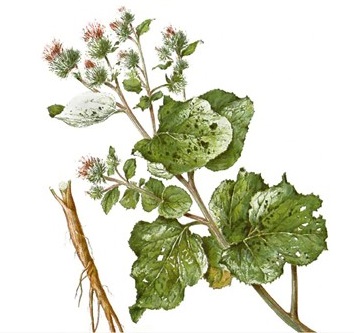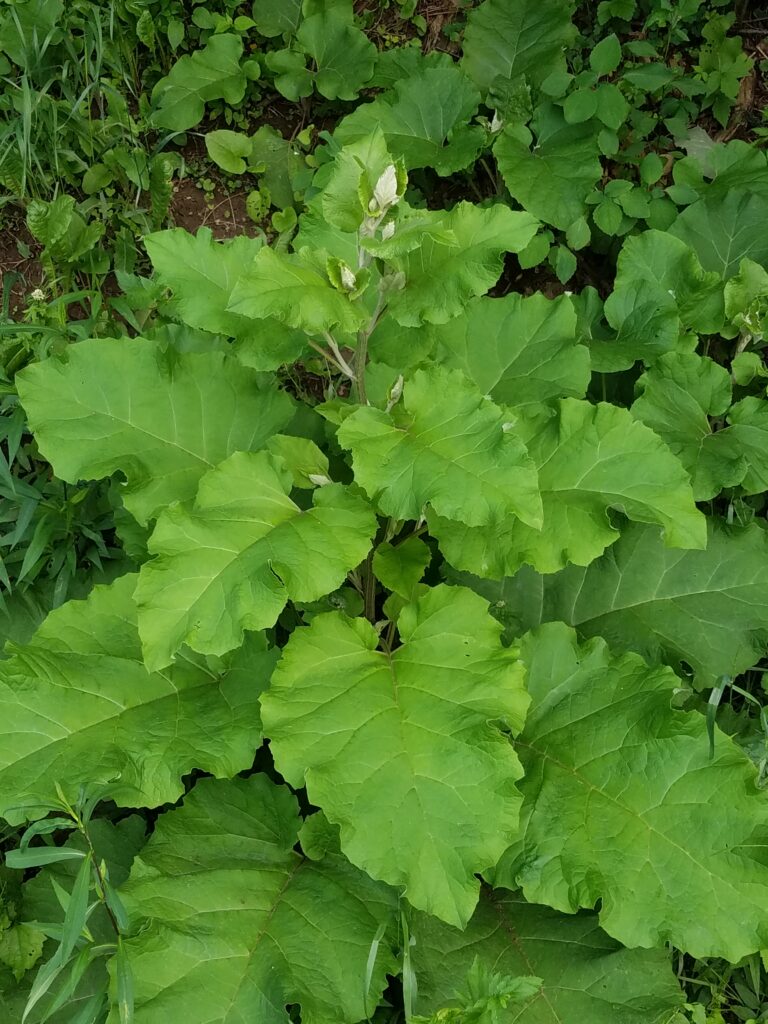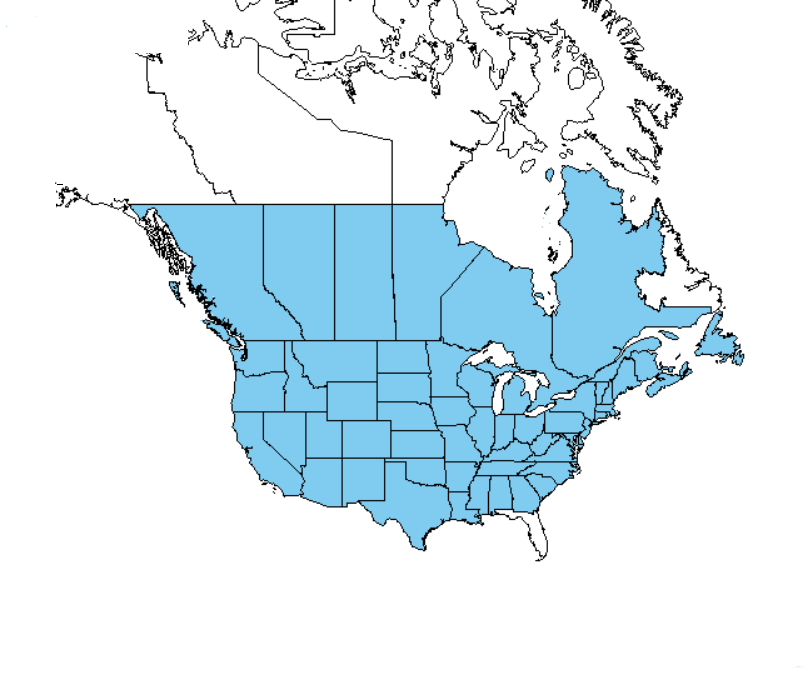Burdock Plant Wild Edible
Burdock General Comments
Burdock plant wild edible, a member of the aster family, is a native plant to Europe and Northern Asia. It was brought into North America by colonists and is now widespread throughout the United States. Like the dandelion, it is an invasive species that competes with native plants.

Burdock is a biennial. In its first year it has no large central stem or flowers. It grows only as a basal of rosette leaves that stay close to the ground.
The burdock plant contains minerals and vitamins. This should be considered an important year-round forage plant since most parts can be eaten and different parts can harvested year-round.
Common Names
Common Burdock, Gobo, bur weed, clotburbeggar’s buttons
Description

Burdock is a tall, about 3’ – 7’ in height, weed with burrs that stick to clothing. The basal rosette of leaves stays close to the ground the first year and the beginning of the second. These basal rosettes can grow over 3 feet wide.
The plant has purple flowers on tips of a prickly ball of bracts (Velcro like) on long stalks that bloom between June and October. Flower heads are ½” – 1 ½” across.
The lower leaves are broad and lightly lobed and can grow almost 2’ long and about half as wide – as a comparison, they are somewhat rhubarb like. They are dark green and egg shaped.
Location
Burdock, like many such plants, thrive along riverbanks, disturbed habitats, roadsides, edges of forest, vacant lots, and fields. Except for the southern areas, it grows throughout North America.
Edible
Leaf stems can be peeled and cooked by boiling for about 20 minutes.
Young leaves can be boiled or steamed and eaten like spinach.
Roots should be scrubbed to remove the skin. Chop off and discard the top few inches of root, which can be tough. The root should be boiled until tender.
Immature flower stalks may be eaten raw or boiled, their taste resembles that of artichoke.
Harvest
Immature flower stalks may be harvested in late spring before flowers appear.
The root can be rather long (up to 3’). The best parts are fragile. Dig carefully.
Leaves and stems are best when picked young.
Grow Your Own

Sow seeds directly outdoors in spring as soon as the soil can be worked and when the danger of frost is over. Cover the seeds with light soil and lightly tamp down. Because it is a biennial, the first year growth only forms a cluster of large leaves. The large leaves grow from a long tap root that can grow over two feet down. In year 2 a branched stalk with smaller leaves will grow out of the plant and, in the late summer, purple-pink flowers will form. In autumn, these flowers are replaced by round brown burrs that persist into the winter.
Notes of Interest
Cultivated in China, Japan, Vietnam, Indonesia, Philippines, New Zealand, the United States, Canada and in various countries in Europe as a vegetable.
The inspiration for Velcro came from the burdock bur. The inventor, a Swiss electrical engineer named Georges de Mestral, was walking along one day in the mountains and saw burs sticking on his wool socks and his dog’s fur.
Back to Traderscreek edible plants